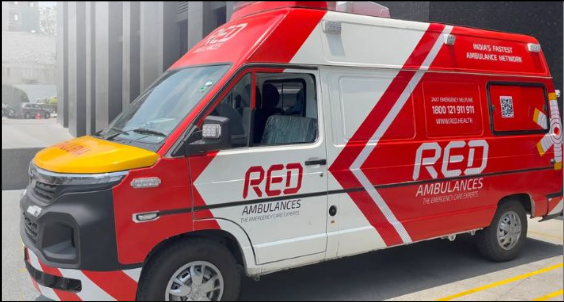In today’s fast-paced world, ambulance services serve as a vital link in the healthcare system, often representing the first point of contact for patients in need of urgent care. Whether it’s a public emergency ambulance service responding to a 911 call or a private ambulance offering specialized transport, the efficiency, availability, and reliability of these services can significantly impact patient outcomes. In this article, we will explore the roles, distinctions, and growing importance of ambulance services, emergency ambulance services, and private ambulance providers in today’s healthcare infrastructure.
Understanding the Core: What Is an Ambulance Service?
An ambulance service refers to any service that provides medical transportation for patients. This includes both emergency and non-emergency transfers. These services are equipped to handle a range of medical situations, from minor injuries to life-threatening conditions. Most ambulance services are staffed by paramedics, emergency medical technicians (EMTs), or specialized personnel trained in pre-hospital care.
The core goal of an ambulance service is to provide timely and appropriate care while transporting a patient to a hospital or healthcare facility. Depending on the severity of the situation, the type of ambulance dispatched may vary—from basic life support (BLS) to advanced life support (ALS) or even intensive care unit (ICU) ambulances.
Emergency Ambulance Services: The Lifeline in Critical Situations
An emergency ambulance service is specifically designed to respond to life-threatening situations where immediate medical intervention is essential. These include heart attacks, strokes, severe injuries, and other critical medical events. Emergency ambulances are typically dispatched through national or regional emergency numbers (such as 108 in India, 911 in the U.S., or 999 in the UK).
These ambulances are fully equipped with advanced medical equipment such as defibrillators, oxygen supplies, ventilators, and medications. Moreover, the paramedics and EMTs aboard are trained to stabilize patients on the spot and provide life-saving care en route to the hospital.
Key Features of Emergency Ambulance Services:
- Rapid Response Time: Crucial during the “golden hour” following a medical emergency.
- Advanced Equipment: Includes cardiac monitors, defibrillators, and ventilators.
- 24/7 Availability: Operates round-the-clock to ensure accessibility.
- Integrated Communication: Linked with hospitals to provide real-time updates on patient condition.
Emergency ambulance services are often publicly funded or subsidized by governments, making them accessible to a wide population segment. However, demand often exceeds supply, leading to delays that could be critical in life-threatening situations.
The Rise of Private Ambulance Services
As healthcare demands grow and government-run services face constraints, private ambulance services have emerged as a vital complement to public emergency systems. These services are typically offered by private hospitals, non-profit organizations, or specialized medical transport companies.
Private ambulance services cater to a broad range of patient needs:
- Non-Emergency Medical Transport (NEMT): For patients needing regular hospital visits, dialysis, or physiotherapy.
- Emergency Medical Response: In regions where public systems are inadequate or overwhelmed.
- Specialized Transport: For patients requiring neonatal care, critical care, or inter-hospital transfers with ICU facilities.
While private ambulance services usually involve a fee, they offer several advantages, including quicker dispatch, customizable services, and sometimes more advanced medical equipment.
Advantages of Private Ambulance Services:
- Faster Response Times: Less bureaucratic delays.
- High Customization: Tailored care based on patient condition.
- Extended Services: Can include long-distance transfers, air ambulance coordination, and more.
- Flexible Booking: Available via apps, phone calls, or online platforms.
The Integration of Technology
Technology is reshaping how ambulance services operate. From GPS-enabled dispatch systems to real-time health monitoring, modern ambulances are becoming mobile care units. Many services now use telemedicine to connect patients with hospital doctors during transit, enabling quicker diagnosis and preparation at receiving hospitals.
For private ambulance services, digital platforms allow for real-time booking, tracking, and feedback mechanisms, making the process smoother and more transparent for patients and their families.
Choosing the Right Ambulance Service
When faced with a medical emergency or even a planned hospital transfer, selecting the right ambulance service is crucial. Here’s a quick comparison:
| Criteria | Emergency Ambulance Service | Private Ambulance Service |
| Availability | 24/7, Government-operated | 24/7, but depends on provider |
| Cost | Usually free or subsidized | Chargeable based on service type |
| Speed of Response | May face delays in high-demand areas | Usually quicker in urban areas |
| Equipment | Standardized, high-quality | May vary; often includes advanced care |
| Booking Flexibility | Through emergency numbers only | App, online, or phone-based |
| Customization | Limited | Highly customizable |
Conclusion
Ambulance services—both public and private—are indispensable pillars of modern healthcare. While emergency ambulance services provide critical life-saving interventions in urgent situations, private ambulance services fill the gaps with personalized, rapid, and specialized medical transport. Together, they form a cohesive network that ensures patients receive timely and effective care.
As medical needs evolve and technology continues to advance, the collaboration between public emergency response units and private providers will be crucial in delivering efficient, scalable, and patient-centric ambulance care. Whether you are managing a planned hospital visit or a sudden health emergency, understanding your options can make all the difference in the quality and outcome of care.

